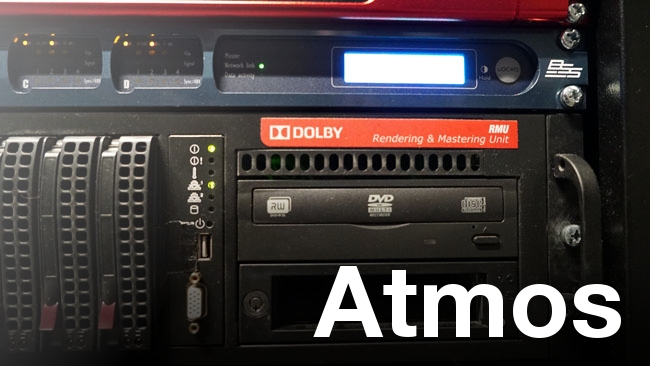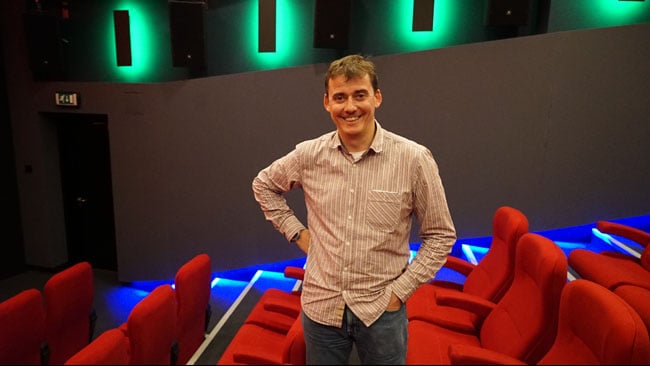
RedShark Technical Editor Phil Rhodes delves into Dolby and how it transformed an existential dilemma into an exciting innovation for movie theater sound.
In film and television, we deal with technologies that are designed to reproduce natural phenomena for the consumption of human sensory systems: sight, sound, and in our more off-the-wall moments, smelly-vision has also been tried. As technology improves, the ability of these systems to fool our senses increases, perhaps to a point where further refinement is not useful.
Naturally, a degree of caution is necessary: capturing at a higher quality than we deliver makes it easier to maintain these high standards throughout the production chain, so we shouldn't make unqualified statements against better camera and sound gear. But proposals for resolutions beyond 4K, for instance, have provoked healthy debate about usefulness, and that's just the picture side of the equation. Sound, with its lower bandwidth, hit the barrier of more or less complete transparency some time ago.
Dolby's quandary
So, companies such as Dolby Laboratories have something of a problem. While the company has always been a supplier of equipment, most of its living has traditionally come from licensing technologies, particularly those designed to reduce noise in analogue audio devices, and to pack more than two channels of surround sound into optical 35mm soundtracks designed only for stereo. Outside the field of film and TV, various technologies remain in use. However, with both blu-ray and digital cinema making it easy to include multiple audio tracks for both home and commercial exhibition, the now-everyday 5.1 channel (five points of surround plus low-frequency effects) didn't require any Dolby-licensed technology.
Previously, technologies such as Dolby Stereo (Properly Dolby SVA, for Stereo Variable Area), the classic four-channel phase encoding which was common through the 80s and early 90s, were considered valuable enough to attract competing imitators. Even more became possible with Dolby Digital, the application of 2D barcodes to encode audio information between the sprocket holes. With the decline of 35mm distribution, however, the value of these technologies seems set to evaporate more or less completely, and soon.
Combine this situation with the desire of exhibitors to advertise new and exciting exhibition technologies to audiences, perhaps most recently exemplified by the rush to stereoscopic 3D, and clearly something new was required, or in the words of Dolby's Nick Watson:

"Studios wanted something more, and it became possible with the introduction of digital cinema. At the time we came up with a channel-based solution which allowed more speaker positions and had metadata to downmix to a backwards-compatible 5.1 mix. As it turned out, though, the industry wasn't quite ready in terms of the disruption already caused by the introduction of digital cinema. Hence, 5.1 became the standard."
The new 7.1
Although many films now mix with even more capable 7.1 channel audio, it's far from universal, and many of the 16 channels of a digital cinema package are occupied with alternative languages and specially-prepared tracks of audio description or emphasised dialogue for people with sight or hearing problems, which is an outstanding development and an enormous help, but not of much interest outside of their very specific target audiences.
"Eight or so years after [the rollout of digital cinema]," said Watson, "we started looking again at sound in cinema and what could be done, mainly as a result of the studios asking us - what is the next generation? We worked with Disney/Pixar and Skywalker Sound and did a lot of tests with channel based configurations, having mixers come in and mix content. We then showed it at trade shows and said, 'would you be willing to invest? And that was good for us; exhibition did want something more.'"
Toy Story 3 would be the first film to be released in the new Dolby 7.1 format. It would have been easy, probably, to simply keep throwing more channels at the problem, but there are issues of scalability and the practicality of installing ever-larger configurations in all of the world's incredibly variable auditoria. The solution is something Dolby calls object-based audio, an approach by which individual sound effects, up to 118 of them simultaneously, which would normally be mixed into a continuous 5.1-channel surround soundtrack, are maintained as separate mono audio streams and stored with positional information.
On playback, there is a conventional 7.1-channel surround bed, on top of which an intelligent processor uses the positional information to route the audio data to the appropriate loudspeakers, and the surround soundtrack is built in real-time. Perhaps the closest pre-existing technology to this is in video games, which have for some time been able to render surround sound using positional information from the simulated 3D environment, even to the point of incorporating the DSP required to do so on the sound card.
Dolby Atmos: Intended audio
Reproducing the system, which Dolby call Atmos, naturally requires more loudspeakers than more conventional approaches. The basic requirement is that the angle subtended by lines between a listener and any two adjacent loudspeakers must be sufficiently small that the listener perceives uninterrupted motion as the sound is panned between them. This generally implies two overhead rows of loudspeakers of the same type as the wall-mounted surround, which increase in number depending on the size of the auditorium. In smaller auditoria, bass is managed by two additional loudspeakers at the rear, designed to allow the timbre of the surround speakers to be matched with the (typically larger and more powerful) behind-screen speakers. In larger auditoria, more bass reinforcement may be necessary, usually partway down the walls.
Installations are calibrated by a Dolby engineer, and consultation on room design is included in the price of the Atmos decoder.
The unit currently runs around $30K, although the additional amplification and loudspeaker equipment will of course increase the complete cost of installation. Dolby's Soho Square screening room uses JBL 5732 tri-amplified loudspeakers behind the screen, and AM7212 in the surround and overhead arrays.
The result is, of course, extremely powerful, with a potential of many kilowatts available, although that power is something the audience should rarely be aware of other than perhaps with the occasional use of low-frequency effects which enjoy an appropriate degree of gentle insistence. Mastering Atmos requires the use of Pro Tools plug-ins, developed by Dolby, which provide a simple three-dimensional panning tool.
This plug-in permits the mixer to create automation tracks representing the 3D position of a sound and optionally a size parameter for diffuse sources, which are later processed out into deliverable files. Additional 5.1 and 7.1 versions are automatically created based on the Atmos information, for backward-compatibility.
Some movie-goers, having been subjected to the whims of a projectionist with the impression that volume and quality correlate, will be pleased to hear that Dolby's calibration service ensures that the audience should hear exactly what was heard by the filmmakers during the mix. Blame not, therefore, the cinema, but the director, if it's too loud. Exhibitors do have the ability to make an overall volume adjustment, but on paper at least, everything should be consistent.
Atmos has now been in the wild for about two years, and not just in Dolby's home turf of the USA, where there are over 200 screens equipped. There are 30 in Russia, many in China, and currently 10 in the UK. Perhaps the most telling opinion comes from Danny Boyle, who, Watson tells us, "said it would give him the ability to create impact without using level to do so, and that really appealed to him as a filmmaker."